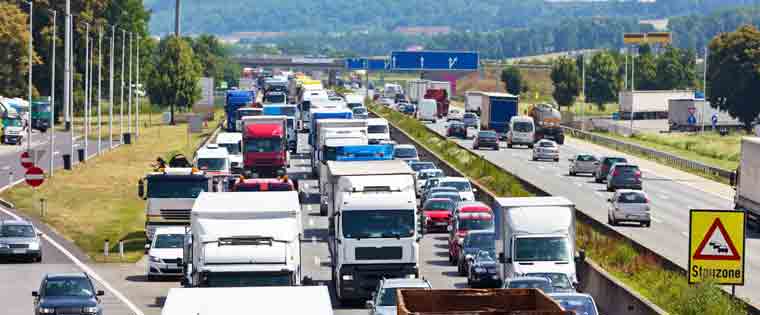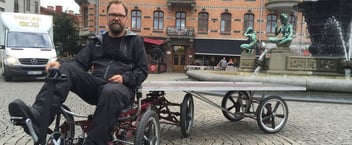
Over the past few blogs, we've been discussing several innovations for business logistics and route optimization in cities. We will continue with some more.
French retailer Monoprix uses rail transportation, in combination with Natural Gas Vehicles (NGV) to transport goods from warehouses located in the outskirts of Paris to their stores downtown.
Academics from the University of Rome “La Sapienza” detail this process:

Source: Designed by Drivin with information from Alessandrini, A., Delle Site, P., Filippi, F., & Salucci, M. V. (2012). Using rail to make urban freight distribution more sustainable.
According to the article, the scheme has contributed to decrease negative impacts of urban freight distribution in Paris:
- Total distance has been reduced by 700,000 km/year.
- They have saved 70,000 liters of fuel, cutting CO2 and NOx emissions.
- The use of NGV for the last mile distribution has improved negative impacts generated by freight traffic.
- The small size of trucks, has had a positive impact on safety, but require a longer number of trips to deliver goods.
According to academic analysis in the Journal of Transport Literature,
“The Monoprix case brings in front the challenges of building freight rail transport in urban areas, such as the need for wide logistics facilities bounded to the railway network and some retailing societies that have at least a small quantity of goods to be delivered every day to the city.”
However, its truck load capacity is not yet optimal. According to the Italian scholars, the scheme needs to develop its cost effectiveness further, as the combination of rail transport, a central depot and transshipment are still expensive.
Hamburg: Big Data traffic analytics
The German port is one of the largest maritime hubs in the world. According to Cisco, it handles 10,000 big vessels a year. That is why they have developed optimization software for a combination of smart traffic, parking, and port logistics, in an interconnected urban setting.
Cisco calls this relationship between ships, roads, bridges, and traffic lights a “port-wide nervous system” built on an IT platform: they gather data, create intelligence and input it in real time signage and mobile applications.
The Cisco White Paper explains:
“Smarter coordination means that larger quantities of goods can be trans-shipped in the port area. By embracing an Internet of Everything approach, the Port of Hamburg is creating the capacity to grow for decades to come-”
By connecting port logistics to an intelligent network, operational costs will decrease by a targeted 70% over seven years while capacity will double by 2025, without increasing the space.
How? Cisco explains:

Source: Design by Drivin with Cisco Internet of Everything Jurisdiction Profile information
According to Best Fact, some of the benefits for vehicle optimizations are:
- Lower congestion in and around the port area
- Less waiting time at docks
- Less time to respond to traffic disruptions
- Optimized trip planning
- Better communication between driver and trip planner
- Data easy to access, use and gather
Crowdsourced urban delivery in Paris couriers
These are not exactly fleet tracking services. Deliver.ee is offering France’s first urban delivery network for online orders. The company “serves businesses and consumers, delivering products within hours of an online purchase”.
Sébastien Poudat, Deliver.ee co-founder and CTO, explains in thoughtsoncloud.com that “once an order was placed, it would immediately be assigned and dispatched to a courier, so we’d have to be super-responsive and available.”
Online retailers add the Deliver.ee checkout option through a plugin or the Deliver.ee API and customers can choose to receive their locally delivered purchases the same day or by appointment.
The algorithm “that connects the right people to do the job with the right vehicle in the right place, just like Uber does”, according to Michael S. Levy, co-founder, and CEO, as it offers
- Tracking via GPS.
- Delivery status in real time.
- Proof of delivery.
“This is important because you no longer have to wait all day for something to be delivered, so we’re giving back the power to the consumer to decide when and where to receive their delivery. And we’re giving back the power to local stores,” he explains.
What route optimization technologies do you consider most relevant?



